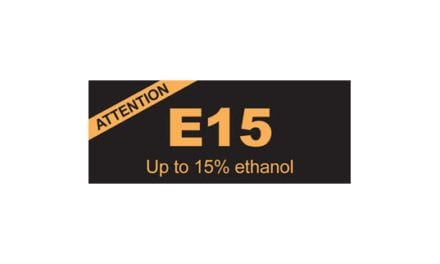More Crude Oil, Less Refining Has Implications for Crack Spreads
- Crude oil stocks add ten million barrels
- Refinery usage falls 5.5 percentage points to 85.5 per cent
- Cushing OK continues build in crude oil stocks to 36.8 million barrels
- Natural gas, basis February futures, made new lows.
Sincerely, Alan Levine Chairman, Powerhouse
Table covers crude oil and principal products. Other products, including residual fuel oil and “other oils” are not shown, and changes in the stocks of these products are reflected in “Total Petroleum Products.”Statistics Source: Energy Information Administration “Weekly Petroleum Status Report” available at www.eia.doe.gov
The Matrix
The Department of Energy’s Weekly US Petroleum Balance Sheet for the week ending January 16, 2015 is particularly significant for those interested in the gasoline and ULSD crack spreads. These spreads are seen as representing refiners’ gross profit margins on those products. The crack spread is the difference between the revenue received on a barrel of product and the cost of the crude oil refined to produce them.
The latest data show a dramatic reduction in refinery utilization and increase in crude oil stocks. They also show gasoline demand at levels more like summer than now, in the dead of winter. This combination is a recipe for product price strength relative to crude oil and an expanding crack spread.
The April gas crack reached a top in early December at $27.90. Subsequently the spread moved lower, reaching a low this month at $16.82. It has since recovered to $19.46 following release of the weekly petroleum balance data. Next resistance is $20.27. A fifty percent retracement of the down move is $22.36. A one-dollar-per-barrel change in the value of the crack spread is worth $1,000 for the contract.
Supply/Demand Balances
Supply/demand data in the United States for the week ending January 16, 2015 were released by the Energy Information Administration.
Total commercial stocks of petroleum rose 2.5 million net barrels during the week. The largest increases were in crude oil, gasoline and ethanol. Draws were reported for distillate fuel oil, residual fuel oil and propane. Stocks of other oils dropped 0.3 million barrels.
Crude oil supplies in the United States increased to 397.9 million barrels, a gain of 10.1 million barrels. Stocks are at a record level, going back at least to 1983.
Stocks of crude oil rose in PAD Districts in the Midwest (+7.3 million barrels) and on the West Coast where inventories gained 1.2 million barrels of crude. Gulf Coast crude oil supplies rose 1.2 million barrels.
Cushing, Oklahoma inventories rose to 36.8 million barrels according to the week’s report. This was an increase of 2.9 million barrels for the report week. Stocks at Cushing have been growing since October 3rd reflecting concerns that Gulf Coast storage may be nearing capacity. Gulf Coast inventories have reached 196.8 million barrels.
Domestic crude oil production gained, rising to 9.186 million barrels daily. Crude oil imports fell during the week, moving down 0.274 million barrels daily to 7.2 million barrels per day.
Crude oil inputs to refineries fell sharply; there were 14.9 million barrels per day of crude oil run to facilities. Gross inputs, which include blending stocks, declined to 15.2 million barrels daily.
Refinery utilization eased to 85.5 per cent of capacity. Facilities backed off throughout the country, except for the Rockies. The sharp decline in utilization reflects refinery turnarounds now under way.
Total petroleum product inventories netted gains of 10.9 million barrels against declines of 8.4 million barrels. Gasoline added 0.6 million barrels to supply. Gains were seen in every PAD District.
Demand for gasoline fell 23,000 barrels per day. It is at 8.9 million barrels daily. Refinery production added 90,000 barrels daily, reaching 9.2 million barrels daily.
Distillate fuel oil reduced inventory by 3.3 million barrels. Stocks were 136.6 million barrels. National demand for the week was reported at 4.5 million barrels per day during the report week. This was a weekly increase of 0.6 million barrels daily for the report week.
Propane stocks fell 3.6 million barrels. There are 71.2 million barrels in storage. Current demand is estimated at 1.7 million barrels per day.
Natural Gas
According to EIA: The net withdrawal reported for the week ending January 16 was 216 Bcf, 40 Bcf larger than the five-year average net withdrawal for that week, and 83 Bcf larger than last year’s net withdrawal. Working gas inventories as of January 16 totaled 2,637 Bcf, 199 Bcf (8.2%) higher than last year at this time and 153 Bcf (5.5%) lower than the five-year (2010-14) average. Storage levels for the East, West, and Producing regions were above their year-ago levels by 153 Bcf, 33 Bcf, and 12 Bcf, respectively, but they remain below their five-year average levels. The East, West, and Producing regions had net withdrawals of 118 Bcf (20 Bcf higher than its five-year average withdrawal), 16 Bcf (6 Bcf lower), and 82 Bcf (27 Bcf higher), respectively.
Withdrawals were lower than expected by market analysts despite being higher than last year’s and the 5-year averages. Prices fell following release of the weekly storage data. At their lowest price for the day, $2.766, February natural gas futures made a new low.
Click to enlarge chart.
Low natural gas prices are not providing an additional opportunity for fuel switching. This is because heating oil has lost so much of its value. One report claims that some New England states – particularly Maine – are experiencing a price inversion between heating oil and natural gas.
Futures trading involves significant risk and is not suitable for everyone. Transactions in securities futures, commodity and index futures and options on future markets carry a high degree of risk. The amount of initial margin is small relative to the value of the futures contract, meaning that transactions are heavily “leveraged”. A relatively small market movement will have a proportionately larger impact on the funds you have deposited or will have to deposit: this may work against you as well as for you. You may sustain a total loss of initial margin funds and any additional funds deposited with the clearing firm to maintain your position. If the market moves against your position or margin levels are increased, you may be called upon to pay substantial additional funds on short notice to maintain your position. If you fail to comply with a request for additional funds within the time prescribed, your position may be liquidated at a loss and you will be liable for any resulting deficit. Past performance may not be indicative of future results. This is not an offer to invest in any investment program.Vol. PH 03 NO. 55
Was this memo helpful? We’d like your feedback. Please respond to [email protected] Copyright © 2014 Powerhouse, All rights reserved.












